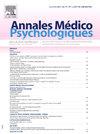儿童精神科医生在被忽视儿童护理中的作用
摘要
忽视是最常见的虐待儿童形式。它也会对儿童的成长造成最严重的影响,从青春期到成年期,出现精神障碍的风险会随之增加。由于缺乏对专业人员的培训、儿童精神病学的定位以及难以理解这一模糊概念的内涵,忽视儿童现象如今仍未得到充分认识。在提出忽视的定义、特征及其影响之后,我们将介绍儿童精神科医生在被忽视儿童生态系统中可能采取的行动。忽视既不是一个法律术语,也不是一个医学术语。然而,医生和社会工作者却在使用这个词,其宽泛的定义是缺乏对儿童成长的适当照顾。忽视是多因素造成的。法国对儿童基本需求的共识方法强调了对安全的元需求,强调了依恋和照料者的特殊品质。根据这份报告,我们认识到情感或情绪上的忽视是最成问题的忽视形式。忽视的影响很早,取决于儿童的年龄。它们可以表现为婴儿的发育迟缓、睡眠障碍、音调失调、智力障碍以及青春期的各种内化和外化障碍。被忽视儿童的死亡率和发病率都会升高,发育后遗症也有描述。与身体虐待相比,忽视对发育的影响更大。儿童精神科医生可以采取三种措施来治疗被忽视的儿童。首先,他或她必须识别忽视,并在适当情况下发出警报,以保护儿童。识别工作包括了解被忽视的迹象和因年龄而异的特殊临床模式,这就需要探索不同的发展脉络。有三种临床模式似乎与极端忽视有关:无症状抑郁症、创伤后应激障碍(尤其是复杂的发育创伤)和依恋障碍。当遇到暗示被忽视的症状时,儿童精神科医生应尽量排除感官或神经发育方面的原因,有时会寻求专家的建议。他(她)会观察儿童单独和与父母的行为,以及亲子关系,并以生态系统的方法考虑儿童在家庭微观系统之外的情况。儿童精神科医生可以使用现有的标准化工具来探讨忽视的各个方面。鉴于发育窗口期较窄,这种多方会诊评估不应延误儿童精神科医生的初步行动。特别是,儿童精神科医生可能需要向行政和司法当局报告儿童的情况。然后,对被忽视儿童的照顾将在儿童自身的生态系统中进行。干预必须是早期的、参与性的,并与社会服务机构、教育工作者和安置地点的工作人员合作进行。照料将设法弥补忽视对儿童发展造成的负面影响,以纠正儿童的发展轨迹。照顾必须考虑到儿童的心理病理学。心理治疗(其框架需要调整)将帮助儿童对自己的历史承担起责任。儿童精神科医生还可以参与帮助高危儿童的创新举措,如流动小组。训练有素的儿童精神科医生需要采取的最后一项行动是预防性行动。重要的是,儿童精神科医生要了解并接受培训,以应对忽视及其影响。今天被忽视的儿童,明天就会成为精神失常最严重的成年人。Neglect is the most common form of child abuse. It can also have the most serious impact on a child's development, with an increased and accompanying risk of the emergence of psychiatric disorders from adolescence to adulthood. Child neglect is under-recognized today, due to a lack of training for professionals, the orientation of child psychiatry, and difficulties in understanding what this vague concept refers to. After proposing definitions of neglect, its characteristics, and its effects, we present the possible actions of the child psychiatrist in the ecosystem of the neglected child. Neglect is neither a legal nor a medical term. It is, however, used by doctors and social workers, with a loose definition as the absence of appropriate care for a child's development. Neglect is multifactorial. The French consensus approach to the basic needs of the child has highlighted a meta-need for security, emphasizing attachment and the particular qualities of the caregiver. In light of this report, we understand that affective or emotional neglect is the most problematic form of neglect. The effects of neglect are early, depending on the child's age. They can manifest as developmental delays, sleep disorders, tonus disorders in infants, intellectual disorders, and various internalized and externalized disorders in adolescence. Mortality and morbidity are increased in cases of neglect, and developmental sequelae have been described. Neglect has a greater impact on development than physical abuse. The child psychiatrist can take three types of action to treat the neglected child. Firstly, he or she must identify neglect and alert the appropriate instances so as to protect the child. Identification involves being aware of indicators of neglect and a particular clinical pattern that varies according to age, requiring the exploration of the different lines of development. Three clinical patterns seem to be linked to extreme neglect: anaclitic depression, post-traumatic stress disorder, particularly complex developmental trauma, and attachment disorders. When faced with symptoms suggestive of neglect, the child psychiatrist should try to rule out a sensory or neurodevelopmental cause, sometimes seeking the advice of a specialist. He or she will observe the child's behavior alone and with his or her parents, as well as parent-child relationships, and will consider the child outside the family microsystem in an ecosystemic approach. The child psychiatrist can use available standardized tools that explore the various dimensions of neglect. This multi-consultation assessment should not delay the child psychiatrist's initial actions, given the narrow developmental windows. In particular, the child psychiatrist may be required to report the child's situation to the administrative and judicial authorities. The care provided to the neglected child will then take place within the child's own ecosystem. Interventions must be early, participative and in partnership with social services, educators, and staff at the placement site. Care will seek to compensate for the negative developmental effects of neglect, in order to correct the child's developmental trajectory. It must take into account the child's psychopathology. Psychotherapy, the framework of which will need to be adapted, will help the child to assume ownership of his or her history. Child psychiatrists can also take part in innovative initiatives to help children at risk, such as mobile teams. The final action to be developed by the trained child psychiatrist is preventative. It is important that child psychiatrists be informed and trained to deal with neglect and its effects. Today's neglected children will be tomorrow's adults with the most psychiatric disorders.

 求助内容:
求助内容: 应助结果提醒方式:
应助结果提醒方式:


